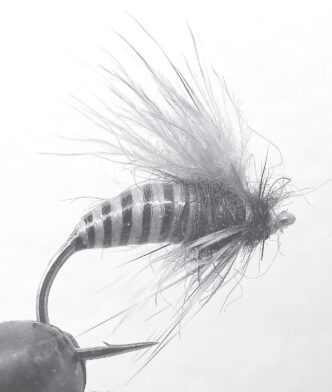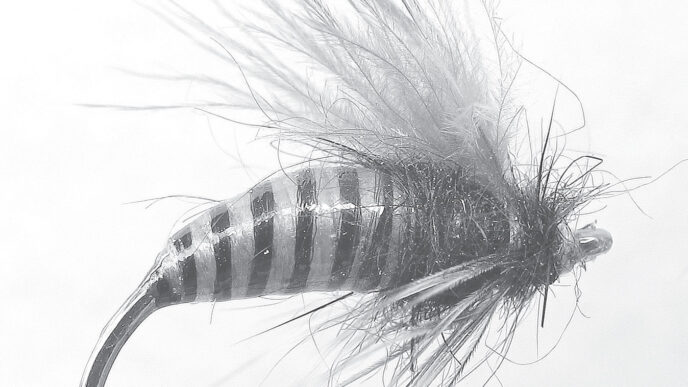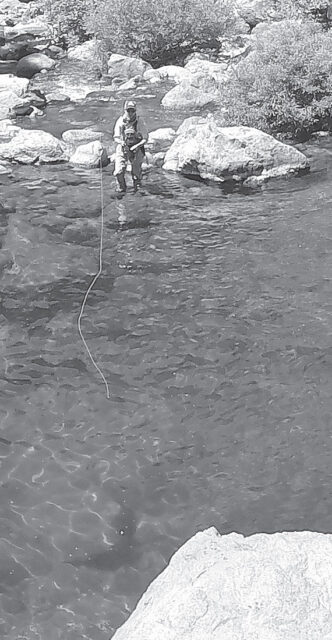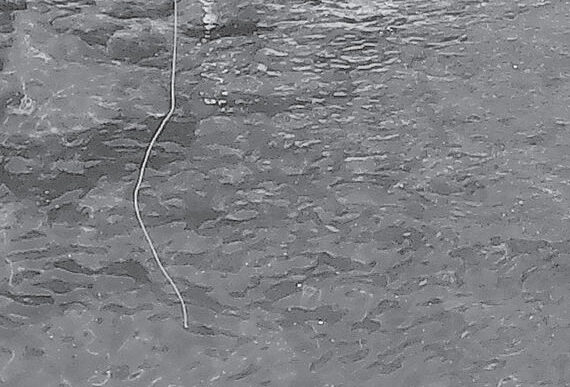The popularity of an artificial fly pattern may last longer than the life span of a mayfly, but not by much. Our Western instinct to strive for bigger, better, faster, and stronger, combined with our diminishing attention span and our quest for “the sure bet,” has led to a whirlwind evolution of all things fly fishing. This is not Darwinian evolution, where survival of the best or the fittest sets the pace, but an evolution where marketing and peer pressure beat the drum for the march of progress.
Fly-fishing rods are the conspicuous flag bearers of our quest for the latest quick fix. Last year’s awesome “Gee” technology has been eclipsed by this year’s “Whiz” technology, and come August of this year, you will likely see the buzzwords ignite and detonate in every pitch for the latest in tapered awesomeness. For $999.95, you won’t need to know how to cast when you can buy the most advanced fishing rods in the history of humankind. For such a logical species, we are predictably illogical, and I’m starting to believe that the mark of a seasoned angler is measured by his or her ability to cut through the marketing bull. The technobabble of fly-rod design is light-years above my head, but even I can look at this year’s new “killer” fly pattern and recognize if it is meaningfully different from version 7.0 of last year.
The true evolution in fly-fishing technology does not ratchet forward every autumn with the advent of the Fly Tackle Dealer Show. Real evolution moves at its own hiccup pace, and in fly design, it can be elegantly summed by the history of the Pink Puff.
The inception of the Puff pattern began as a lowly tuft of dyed bucktail or bear fur strapped to a hook to imitate something creeping and crawling across the shallow seabeds of the Caribbean. It was called the Pink Shrimp, and it was one of Joe Brooks’s favorite flies. The shallow waters of the Caribbean are cloaked in a seething pelt of turtle grass, and it regularly snagged shrimp imitations and drove men to insanity. These anglers lost their families and jobs and became fly-fishing guides. One of Brooks’s guides, Pete Perinchief, broke the code for weedless flats flies by tying the hair wing on the bottom of the hook. The wing acted like a shuttlecock and automatically flipped the fly over so it landed upside down. While being retrieved, the upside-down hook avoided most of the turtle grass, and the wing acted as a guard against errant bits of grass or weed. It was a game changer known as the Horror.
In the late 1970s, Bob Nauheim added a twist from steelheading on his home waters of the Klamath and strapped bead-chain eyes onto the Horror. With various-sized eyes, he could adjust the sink rate. The Crazy Charlie was born, and since then, a significant number of flats fly patterns follow his prototype.
The problem with the Crazy Charlie was the distinct “plop” it made when hitting the water. For most bonefish, this wasn’t a problem, but to a new breed of fly fisher trying to figure out how to hook a permit, the “plop” was anathema, because the schizophrenic fish would bolt at the disturbance. Nate Ragland cured the “plop” by wrapping soft, sound-deadening chenille around the bead eyes, and the Pink Puff was born. The Puff was among the very first flies that had a semi-reasonable chance of catching permit.
The Pink Puff caught not only permit, but everything else on the flats. It was stealthy, its sink rate could be regulated, it had a seductive pulse, and by simply altering its colors, it could reasonably imitate an entire smorgasbord of prey items. In the Bahamas, it was claimed to imitate a shrimp, and in the Yucatan and Belize, a baby lobster. It the words of veteran Yucatan flats guide Victor Barrera, “It was the rage!”
The same features that make the Puff an impressive choice for skinny-water fish in the salt also translate to the sweet. A baby lobster at Turneffe doesn’t look any different than a baby crayfish in the Truckee. Computer design the perfect shallow-water trout or carp fly, and it would be the Puff. I can’t even pretend to remember the ridiculous number of freshwater fish I’ve taken with this ostensibly saltwater pattern.
Fast forward from the turn of the 1980s to the spring of 2017. The Puff is an ancient relic, a has-been that rarely graces the pages of fly-fishing catalogs. It is no longer the rage, but fish don’t know that. This March, in a small act of rebellion, Lisa tied up an entire fly shop’s worth of Puffs, and then we headed south of the border. Except for the crab patterns we heaved at the occasional permit, we used the Puff and only the Puff. Our guide, Rodo “More Power” Brizz, poked a knowing finger at the Puff dangling from Lisa’s rod and said, “That is a very good fly.” From a guide, a statement like that is akin to being struck by lightning. It is in their DNA to wreck your leader and change the fly the moment you step on their boat. Throughout our entire time together, he never suggested we change to another pattern. Over the week, the Puff caught everything that hid among the mangroves and that moved across the flats and even caught the eye of a permit that broke rank from its school to give it a close (and hold-your-breath) inspection. The Puff is not the only f ly where form has evolved to follow function. From Frank Sawyer’s Pheasant Tail Nymph to Joe’s Hopper, evolutionary tweaks have added functionality to the original pattern. Other flies, such as the Rubberlegs, have changed only in name. The original Rubberlegs was tied by Frank McGinnis in the late 1930s to fool the wily browns on the Big Hole. The McGinnis Rubberlegs has never stopped working, but has changed in name because people along the way simply swapped the leg material or tied knots at the knees. I am acquainted with the new and improved versions of McGinnis’s bug and am quite certain the catching power hasn’t been enhanced by the sideways evolution.
Sometimes it takes a nuclear disaster to drop kick the evolution of fly-fishing gear. On Utah’s Green River, Larry Tullis tied a fairly generic foam cricket or cicada fly called the Black Mamba. I’m pretty sure that it was during an acid-infused guide’s night out that happened to coincide with a planetary burst of radiation that the sedate Mamba transformed into the craziest and least promising excuse of a fly known to history. The psychedelic beast could be tied in any color at hand: red, orange, purple, pink, chartreuse — it didn’t matter, trout fought over it. Then the Chernobyl Ant went on to conquer the Jackson Hole One Fly tournament and create an entire new genera of fly patterns. As illogical as it seemed, the Chernobyl Ant really was bigger, better, faster, and stronger. Sometimes DNA works that way.
















